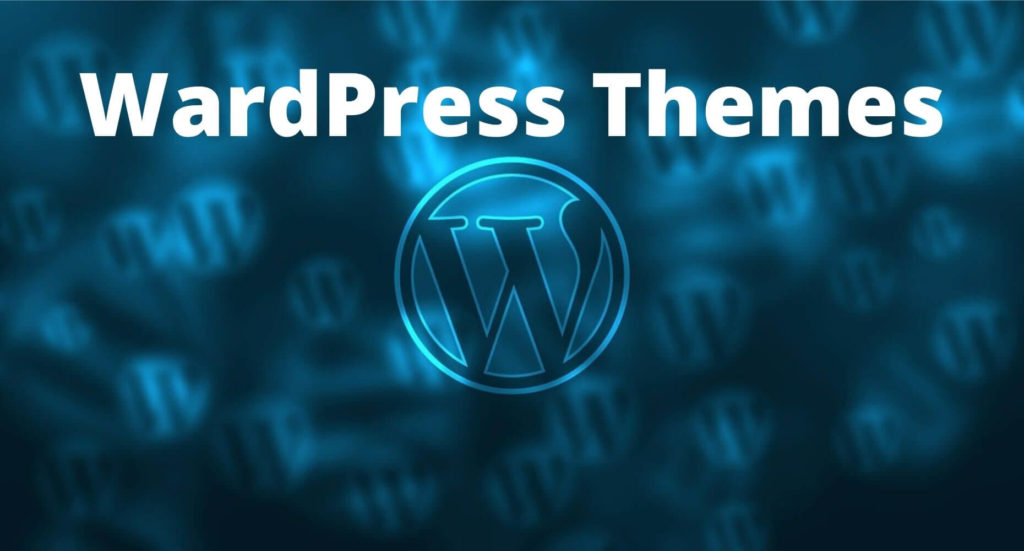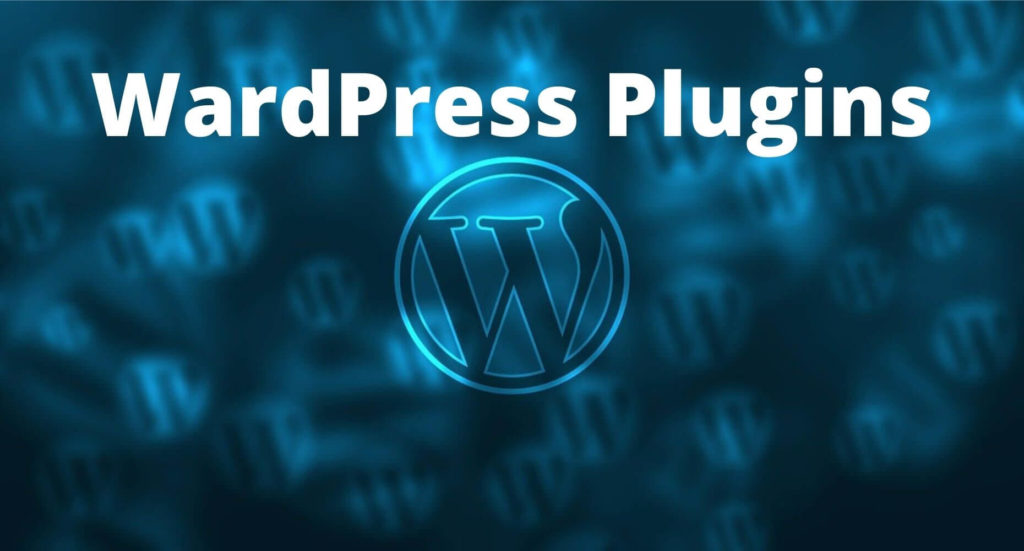As a blogger in the bustling digital era, mastering effective content writing strategies is non-negotiable. Crafting engaging blog posts isn’t just about raw talent; it’s strategic, analytical, and grounded in a deep understanding of your readers and SEO best practices. It’s about honing your blog post writing techniques while being agile enough to evolve with the ever-changing online landscape.
Your journey into creating compelling content goes beyond putting words on a page. It’s about developing a robust blogger content strategy that resonates with your audience, strengthens your SEO, and aligns perfectly with your blogging goals. From HubSpot’s insights to the Content Marketing Institute’s best practices and Moz’s optimization techniques, myriad resources guide you through this process. However, your unique voice and authenticity will always be your magnetic north in the vast blogging universe.
Key Takeaways
- Devise a blogger content strategy to guide your writing and brand’s vision.
- Implement blog post writing techniques focused on SEO and audience engagement.
- Stay informed of the latest trends in content writing strategies for bloggers.
- Balance keyword optimization with narrative quality to capture and retain readers.
- Lean on solid data and experts’ advice to consistently refine your blogging approach.

Understanding Your Audience
Understanding Your Audience: The First Step to Engaging Content
Before you even begin to brainstorm your next blog post, a crucial step awaits – getting to know your audience. The path to impactful content creation for bloggers begins with a deep dive into who your readers are, what ignites their curiosity, and which content marketing strategies will best resonate with them.
Identifying Your Target Readership
To craft content that appeals directly to the interests of your readers, you must first pinpoint exactly who they are. Building detailed reader personas can guide your blogging content ideas, ensuring that every piece you publish is primed for engagement.
Researching Audience Needs and Interests
Utilize tools like Google Analytics and SEMrush to gather data on your audience’s behavior. This information allows you to align your content marketing for bloggers with the topics and formats your readers prefer. Consider their demographics, browsing patterns, and feedback for a well-rounded understanding.
Using Audience Insights to Tailor Your Content
Transform raw data into actionable insights. This means taking the information you’ve gathered and using it to fine-tune your approach to content creation. The goal? To produce content that not only draws in your audience but keeps them coming back for more.
| Audience Insight | Implementation in Content | Expected Outcome |
|---|---|---|
| Preferred Content Type | Integrate more of the most-consumed formats (blogs, videos, infographics) | Higher engagement and longer site visits |
| Common Questions | Create comprehensive guides addressing these queries | Increased trust and authority in your niche |
| Trending Topics in Niche | Cover latest trends with timely, relevant content | Attracting new readers and retaining current audience |
Mastering SEO for Bloggers
As a blogger, your ability to leverage SEO for bloggers plays a significant role in the visibility and success of your content. Understanding and implementing strategic blog content optimization can transform your blog from a hidden gem to a go-to resource. Let’s explore how you can enhance your SEO proficiency.
Starting with the fundamentals, on-page SEO is where your journey begins. Focus on keyword-rich, but naturally flowing titles, headers, and meta descriptions. Alt text for images and a responsive design can also significantly boost your on-page SEO.
For off-page optimization, building a network of backlinks from reputable sites is vital. Engage with your blogging community and consider guest posting to increase your reach and establish domain authority—a key ranking factor for search engines.
According to Search Engine Journal, consistently producing high-quality, relevant content is the cornerstone of SEO success for bloggers.
However, it’s not just about keywords and links; it’s also about providing value through your content. As you nurture your content writing strategies for bloggers, remember that driving organic traffic is a marathon, not a sprint. It involves tweaking and fine-tuning various elements of your blog to align with SEO best practices continually.
| SEO Element | Importance for Bloggers | Tools for Optimization |
|---|---|---|
| Keywords | The cornerstone of on-page SEO; drives targeted traffic | Ahrefs, Yoast SEO, Google Keyword Planner |
| Meta Descriptions | Improves click-through rates from search engine results pages | Yoast SEO, SEMrush, Moz |
| Backlinks | Builds domain authority and referral traffic | Ahrefs, Moz Link Explorer, SEMrush Backlink Audit Tool |
| Content Quality | Engages readers, reduces bounce rate, and establishes credibility | Grammarly, Hemingway Editor, Copyscape |
| Mobile Optimization | Addresses the growing number of mobile users and improves rankings | Google Mobile-Friendly Test, Responsinator, BrowserStack |
With a solid grasp of these SEO foundations, you’re well on your way to enhancing your blog’s visibility and attracting more readers. Remember that SEO is an ever-evolving field, so staying updated with the latest trends and best practices from trusted sources like Ahrefs and Yoast SEO is crucial for continual improvement and success.
Blog Content Optimization Techniques
Optimizing your blog content is not just about sprinkling keywords throughout your post; it’s a nuanced process that requires strategic planning and keen insight into SEO practices. By understanding how to research and deploy keywords and optimize for search engine features, you’ll enhance your blog’s potential to reach the right audience.
Keyword Research for Blog Topics
Begin with conducting thorough keyword research. Use tools like Moz Keyword Explorer and Google Keyword Planner to identify terms your audience is actively searching for. Focus on keywords with a high search volume but moderate to low competition, as these can be your entry point into a crowded market.
Strategic Placement of Keywords in Your Post
Once you’ve selected your keywords, it’s essential to place them strategically within your content. Ensure they appear in the title, headings, and throughout the body where they feel natural and relevant. Remember, the goal is to keep your content reader-friendly while also making it SEO-friendly.
Optimizing Your Blog Posts for Featured Snippets
Featured snippets can dramatically increase the visibility of your blog posts in search results. To optimize for these, create content that concisely answers questions related to your keywords. Use bullet points, lists, and tables to break down information in a digestible format, as these are often pulled directly into snippets.

Optimizing Your Blog Posts for Featured Snippets
By integrating these blog content writing tips into your strategy, you’re not just enhancing its SEO value; you’re also making your content more useful and engaging for your readers. And when you strike the right balance between seo for bloggers and delivering quality content, that’s when your blog truly thrives.
| SEO Element | Why It’s Important | How to Optimize |
|---|---|---|
| Title Tags | First point of search engine contact | Include target keyword; make it engaging |
| Meta Descriptions | Summarizes page content for SERPs | Use keyword; write a clear, concise summary |
| Internal Links | Helps spread link equity throughout your site | Link to relevant, high-authority pages |
| Alt Text for Images | Improves accessibility and SEO | Describe the image using keywords when relevant |
| Content Formatting | Improves readability and SEO | Use headers, subheaders, bullets, and lists |
Remember, blog post writing techniques should always aim to deliver value to your readers while employing smart SEO strategies. Stay informed, stay strategic, and watch your blog’s authority and readership grow.
Crafting a Blogger Content Strategy with Long-Term Vision
Are you ready to elevate your blog from fleeting interest to a sustained online presence? A meticulously-constructed blogger content strategy is your blueprint for long-term success. Let’s dive into crafting a robust plan that resonates with your brand’s mission and speaks directly to your target audience.
Firstly, let’s focus on goal setting. These are not just your run-of-the-mill objectives; these should be SMART: Specific, Measurable, Achievable, Relevant, and Time-bound. Whether it’s increasing your subscriber count, boosting engagement, or elevating your SEO ranking—your goals will dictate your content direction. But remember, flexibility is your friend. The digital landscape is ever-changing; your ability to adapt is equally critical.
So how do you stay ahead of the curve in content creation for bloggers? The answer lies in understanding your competitive landscape. Keep an eye on your peers, and let inspiration (not imitation) lead your innovation. Always ask yourself, “How can my content uniquely benefit my audience?”
A content calendar is the backbone of your strategy. It’s the roadmap guiding you from sporadic ideas to a symphony of strategic execution. Below is a simplified calendar to help you conceptualize a typical blogging month:
| Week | Content Focus | Content Type | Launch Day |
|---|---|---|---|
| 1 | User Engagement | Interactive Poll | Monday |
| 2 | SEO-Driven Article | Keyword Rich Blog Post | Wednesday |
| 3 | Brand Storytelling | Video Content | Friday |
| 4 | Industry Analysis | In-depth Review | Thursday |
As you create this calendar, remember to be detailed, but not rigid. Allow breathing room for spontaneity and current events that might necessitate a shift in your schedule. And don’t forget to leverage analytics. Content marketing for bloggers isn’t complete without reviewing performance metrics to refine your future strategies.
In the words echoed by experts from
Forbes
,
Buffer’s blog
, and
Hootsuite
, success in blogging is about “creating content that both stands the test of time and meets the dynamism of today’s digital trends.” Embrace this philosophy, and you’ll craft content that not only lasts but also leaves a lasting impression.
Content Creation for Bloggers: Quality Over Quantity
In an era where content is king, a fundamental shift is occurring in content writing strategies for bloggers. While there’s a race to churn out content fast, what truly makes an impact is the quality of each post. Through blogging content ideas that focus on depth and value, you can carve out a meaningful presence in the saturated blogosphere. Let’s dissect why in-depth, well-researched content triumphs over a quick output of articles and how you can maintain this without undermining your posting schedule.
Focusing on In-Depth, Valuable Content
The pursuit of crafting substantial and insightful content often bears fruit in the long run. Google’s sophisticated algorithms prioritize content that provides real value to the user, affecting your blog’s visibility and, ultimately, your success. Readers, too, are looking for comprehensive answers to their pressing questions, making it vital for your blog writing strategies to hone in on delivering just that.
Consistency in Posting Without Compromising Quality
Establishing a consistent posting schedule is important to keep your audience engaged with your blog. However, this shouldn’t come at the expense of content quality. Balancing the two is an art form in itself — one that requires effective time management and an understanding of your own limits as a content creator. Strike a balance by creating a content calendar, but allow room for flexibility when striving for quality content.
Utilizing Multimedia Elements to Enhance Posts
Textual content can sometimes become monotonous for readers, no matter how well it’s written. By incorporating multimedia elements, you not only capture attention but also cater to different learning styles. Visuals, such as images and videos, can break up large sections of text, while infographics can simplify complex data, making your blog posts more engaging and shareable.
Below is a brief comparative illustration of text-based vs. multimedia-enriched blog posts:
| Aspect | Text-Based Blog Post | Multimedia-Enriched Post |
|---|---|---|
| User Engagement | Generally lower due to large blocks of text | Higher engagement through varied content types |
| Shareability | Less likely to be shared | Highly shareable due to visually appealing elements |
| SEO Performance | Dependent on text optimization | Enhanced with alt tags and potential to rank in image search |
| Memorability | Depends on the strength of writing | Memorable through striking visuals and well-presented data |
To make the most of multimedia, you want to ensure that every graphic, video, or audio clip serves a purpose and is closely tied to your written content. Remember to use alt tags to describe images for SEO benefits and to facilitate accessibility.
By emphasizing the quality of your content and incorporating various multimedia elements, your blog can stand out in the competitive blogging landscape. Keep striving towards creating exceptional posts that resonate with your audience and establish your blog as an authority in your niche.
Blog Writing Strategies That Captivate Readers
When it comes to creating content that attracts and maintains interest, there are certain blog writing strategies that can make a significant difference. First and foremost, understanding the power of a compelling headline is crucial. A strong headline acts as the gatekeeper to your content; it’s the first impression that can either invite readers in or send them scrolling by.

Storytelling is another vital element in your arsenal of content writing strategies for bloggers. By weaving a narrative into your posts, you not only engage readers but also build a connection with them. Stories evoke emotion, and emotion is a key driver in retaining attention. Begin your posts with an intriguing hook—for example, a curious fact, a provocative question, or a bold statement—to keep your readers eager to delve further.
Let’s not underestimate the role of psychological triggers. Humans are naturally wired to respond to certain stimuli; triggering curiosity, surprise, or even a fear of missing out can keep readers scrolling. Harness these triggers judiciously to create a blog that not only informs but also entertains and resonates on a deeper level.
“The best writers blend the careful construction of a great message with the disarmingly spontaneous elements that reflect real human emotion.” – Copyblogger
Finally, here are some blog content writing tips that can help you refine your approach and genuinely stand out:
- Use bullet points to break down complex information.
- Include images, videos, or infographics to complement your text.
- Play with the pacing of your content—short sentences can increase tension, while longer ones can provide detailed explanations.
- Be authentic and let your unique voice shine through; readers gravitate towards originality.
By implementing these strategies, you’ll not only enhance the quality of your content but also build a loyal readership eager for your next post.
Blogging Content Ideas to Keep Things Fresh and Engaging
Encountering a creative dry spell in blogging is common, but don’t let it dampen your spirit. With a blend of creativity, strategy, and insights into audience trends, you can keep generating compelling blog content that captures and retains the interest of your readers. Let’s walk through some dynamic techniques designed to infuse your blog with a continuous flow of fresh content ideas.
Using Content Pillars to Generate Topic Ideas
Start by establishing a solid foundation with content pillars. These are broad themes that align with your blog’s niche and guide your content creation process. Content pillars serve as the cornerstones of your blog, providing a framework for generating a wide array of topics. By categorizing your blog into these overarching themes, you can produce rich, diversified content that resonates with your audience and supports blog content optimization.
For instance, if your blog centers on sustainable living, your content pillars might be: “Eco-Friendly Home Solutions,” “Sustainable Eating Habits,” and “Green Transportation.” Each pillar can then be broken down into specific topics that fall under its umbrella, giving you a well-organized and virtually endless content library to pull from.
Trends and Seasonal Topics in Blogging
Another way to generate timely and relevant blog posts is by capitalizing on trending topics and seasonal interests. Tools like BuzzSumo allow you to track what’s currently popular or upcoming events and holidays that align with your audience’s interests. This approach is crucial for content creation for bloggers, as it ensures that your content remains pertinent and captures the attention of readers looking for current and engaging material.
For example, a tech blog can draft articles on the latest gadgets during the holiday shopping season, while a food blog can focus on summer barbeque recipes or winter comfort foods depending on the time of year. Trends and seasons can provide a steady supply of blogging content ideas that attract traffic and engagement.
Incorporating User-Generated Content for Diversity
In the vast tapestry of blog content, nothing adds color quite like the authentic voices of your audience. User-generated content (UGC) can provide a rich source of diversity and create a sense of community around your blog. Encourage your readers to share their stories, photos, and experiences related to your blog’s niche. This not only offers a new perspective but also deepens the relationship between you and your audience.
By hosting guest posts, featuring reader comments, or creating community challenges, you foster involvement and invest in a diversified content strategy. UGC is a powerful tool in blog content optimization, as it not only saves you time in content creation but also amplifies engagement and boosts the credibility and relatability of your blog.
By integrating these strategies, your blog will remain a dynamic and ever-evolving platform that continually interests and captivates your audience. Ready to revitalize your blog? Infuse it with these engaging content ideas and watch as your blog flourishes with renewed vibrancy and relevance.
Content Writing Strategies for Bloggers: Balancing SEO and Readability
Striking the perfect balance between SEO and readability may seem like a tightrope act, but it’s a key skill for successful bloggers. In this constantly evolving digital sphere, SEO for bloggers is non-negotiable, however, writing intricate and engaging pieces that capture your audience’s attention is what keeps them coming back for more. It’s not just about saturating your blog with keywords but also about serving high-quality, readable content.
Before we delve into techniques, let’s focus on an essential image that encapsulates these ideas, reflecting the symmetry between optimized and reader-friendly content.
Writing for Your Audience First, Search Engines Second
Understanding that your primary readers are humans and not search engine bots is crucial. Start by creating content that resonates with your audience, addresses their pain points, and provides actionable insights. Indeed, keywords are a vehicle to visibility, but it is the value of your content that retains readership. Delight your reader first; the SEO will naturally follow when you incorporate blog post writing techniques grounded in authenticity.
The Art of Crafting Scannable Content for Online Readers
We live in an age of skim readers. Online audiences want information quickly and efficiently, so structuring your content to facilitate scanning is an art. Here are a few pointers to craft content that catches the reader’s eye:
- Use compelling headers and subheaders that guide readers through your narrative and highlight key points.
- Employ short paragraphs to maintain a reader’s interest and enhance comprehension.
- Highlight important terms or phrases by bolding or italicizing to draw attention.
- Incorporate lists and bullet points to present information in a digestible format.
Improving Readability with Subheadings and Bulleted Lists
Enhancing readability can greatly increase the time readers spend on your blog. Use subheadings to break your content into sections that provide a clear idea of what each part is about, making it easier for readers to navigate. Similarly, bulleted or numbered lists present your points in an organized manner, facilitating comprehension and retention. Here’s an example of how you might present tips for improving blog readability:
- Prioritize clarity and conciseness over complicated jargon.
- Mix up your sentence lengths to create a dynamic rhythm.
- Deploy active voice to engage the reader more directly.
- Integrate visual elements, such as images or videos, to complement your text.
Incorporating these strategies does more than pamper your prose; it lays down the red carpet for both your readers and search engines, solidifying the foundation of content marketing for bloggers. The dual pursuit of optimized and enjoyable content can seem daunting, yet it is entirely within your grasp. Mastering these blog post writing techniques is a surefire way to ensure your blog not only garners attention but captivates and converts visitors into loyal followers.

Content Marketing for Bloggers
Content Marketing for Bloggers: Amplifying Your Reach
As you delve deeper into the blogging world, you’ll quickly realize that creating stellar content is just one part of the equation. The other, equally crucial part is content marketing for bloggers. This is how you take your well-crafted blog posts and get them seen by the masses. It’s not just about throwing your content into the digital universe and hoping for the best; it’s about strategically sharing, promoting, and analyzing your content to optimize reach.
Let’s break down the essentials of a solid content marketing strategy that will help you turn your blog into a traffic magnet.
- Social Media Mastery – Utilize platforms like Facebook, Twitter, and Instagram to share your content and connect with your audience. Tailor your approach to each platform to ensure maximum engagement.
- Email Newsletters – Collect emails from your readers and send them regular updates with your latest posts. Services like Mailchimp make this process seamless and provide valuable analytics.
- Collaborative Efforts – Partner with other bloggers or influencers in your niche to reach new audiences. Guest blogging, podcast appearances, and social media takeovers are excellent methods.
Understanding where your traffic is coming from and what content resonates with your audience is fundamental. Tools offered by Google Analytics or other platforms provide you with a world of data to help refine your marketing tactics.
| Marketing Avenue | Benefits | Strategies for Optimization |
|---|---|---|
| Social Media | Direct engagement, wide reach, shareable content. | Targeted ads, hashtags, trending topics. |
| Personal touch, higher conversion rates, direct traffic to the site. | Segmented lists, A/B testing subject lines, regular schedules. | |
| Partnerships | Networking, exposure to new audiences, backlinks. | Co-hosting webinars, cross-promotion, affiliate marketing. |
Now that you’re equipped with these blog content writing tips, it’s time to step into the spotlight. Integrate these content writing strategies for bloggers into your routine and watch as your digital footprints lead to an impactful online presence. Remember, a great post is only as good as the number of readers who engage with it – so start sharing!
Conclusion
As we wrap up this comprehensive exploration of content writing strategies for bloggers, it’s clear that the power of a strong blogger content strategy is undeniable. You’ve learned that to optimize your blog content effectively, it’s essential to marry SEO with readability, ensuring that your posts are not only found but also loved by your audience.
Key Takeaways of Successful Content Writing
Remember, the core of successful blog writing strategies remains an audience-centric approach, where understanding and addressing the needs of your readers takes precedence. Your goal should always be to provide value, which in turn will bolster your SEO efforts and solidify your position in the digital space. Whether you’re dissecting analytics to finesse your approach or fine-tuning your voice to resonate more profoundly – it’s all in the service of creating meaningful connections with your audience.
Implementing Strategies for Continuous Improvement
There’s no endgame in content creation; instead, there’s a continuous loop of feedback, learning, and evolving. Take the insights gleaned from established names in blogging and anchor your content on the bedrock of quality and relevance. Blog content optimization isn’t just a one-time effort but a consistent practice that aligns with the ever-changing preferences of your readers and the shifting landscapes of search engines.
Encouraging Engagement and Feedback from Readers
Lastly, don’t overlook the importance of engagement. Invite reader feedback and consider their insights as a compass guiding your content strategy forward. Embrace the journey of growth and know that each post is an opportunity to refine your craft. With every piece you publish, you’re not just reaching out to your audience, you’re inviting them into a conversation – one that can lead to a thriving community centered around your blog.
FAQ
What are some essential content writing strategies for bloggers?
Essential strategies include understanding your audience, mastering SEO, creating a long-term content plan, focusing on high-quality content, using compelling headlines and storytelling, and balancing SEO with readability. Keep yourself informed through reliable sources like HubSpot and the Content Marketing Institute.
How can I optimize my blog content for search engines?
Optimize your content by conducting thorough keyword research, strategically placing those keywords in your posts, optimizing for featured snippets, and ensuring your website has good overall on-page SEO. Ahrefs and Moz are great resources to learn more about SEO for bloggers.
Why is understanding my audience important for my blog’s success?
Understanding your audience helps you create content that resonates with them, meets their needs, and ultimately drives engagement. Use tools like Google Analytics and insights from Neil Patel’s blog to research your target readership.
Should I focus on the quantity or quality of blog posts?
Quality should always take precedence over quantity. High-quality, in-depth content will rank better and appeal more to your audience. Supplement your textual content with multimedia elements to enhance posts, and draw from insights provided by Backlinko and BuzzSumo.
How can I come up with new and engaging content ideas for my blog?
Use content pillars, stay aware of trends and seasonal topics, and incorporate user-generated content to keep your blog fresh. Tools like BuzzSumo and insights from Sprout Social can provide great inspiration.
What are some effective blog writing techniques that captivate readers?
Techniques include crafting captivating headlines, engaging readers with storytelling, starting with hooks, and using psychological triggers to maintain interest. Copyblogger and Social Triggers offer valuable techniques for engaging your audience.
Can you give tips on crafting a successful long-term blogger content strategy?
Set clear goals, understand your competition, create a content calendar aligned with your brand’s vision, and remain flexible in your strategy. Forbes, Buffer’s blog, and Hootsuite provide excellent advice on building a content strategy with a long-term vision.
How does SEO factor in when writing for my blog?
SEO is crucial for making your content discoverable. Write for your audience first, making sure your content is scannable with subheadings and bullet points. SEO should enhance rather than detract from readability. Google and Yoast SEO are great references to optimize your SEO without sacrificing user experience.
What are some content marketing strategies for bloggers?
Content marketing strategies include using social media, email newsletters, and partnerships to extend your reach. It’s also important to understand your analytics to maximize your content’s performance. Learn more from the Content Marketing Institute and Social Media Examiner.
Is it important to encourage engagement and feedback from my blog’s readers?
Absolutely, encouraging engagement and feedback helps foster a sense of community and can provide valuable insights into your audience’s preferences, which in turn can improve your content and strategy. Consider using engagement tactics and conversion optimization studies for better results.






